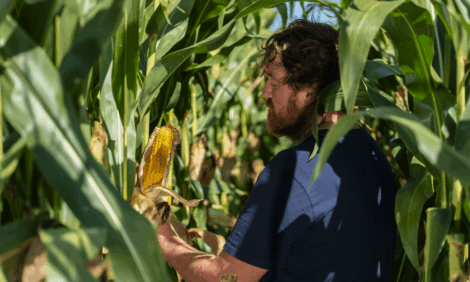



Pasture Management Tips For The Coming Season
By Jack Kyle - Provincial Grazier Specialist/OMAFRA - A well managed pasture will provide the lowest cost feed source for beef cows.Forage that is grazed at the optimum time will provide your livestock with high quality feed throughout the growing season. With pasture there are no harvest costs, no storage costs and no feeding costs other then some fence and a water system, both of which will last for years. Another advantage of a pasture system is that there is no bedding requirement and no manure to spread.
Frost seeding is an effective way to increase the legume content in your pasture. Applying trefoil or white clover seed during March will increase the legume content of the pasture. This has two benefits: 1. the legumes will provide nitrogen to promote grass growth, and 2. legumes hold their feed quality better than grass species, resulting in higher quality feed value in the pasture. Broadcasting trefoil at 1-3 pounds per acre or white clover at 1 pound per acre should give a reasonable stand of new plants. Frost seeding is not fool proof; if there is strong grass competition the seedlings will struggle to survive. Choose fields that were grazed short last fall.
How early in the spring you start cattle grazing a pasture has a big influence on how productive that pasture will be throughout the season. If the plants are bitten off before the second leaf has emerged, their root reserves will be diminished and future growth will be slow. An expression that is used by some pasture managers is "a day in the spring is worth 3 in the fall", meaning that for every day you hold off grazing in the spring you will be able to get 3 extra days of grazing in the fall. By allowing the forage plants to get a good start at the beginning of the season they will be more productive throughout the year.
The pasture is a solar panel catching the energy from sunlight and turning it into plant growth. Any bare soil areas are like holes in a solar panel. These exposed areas have several negative impacts: the opportunity to grow forage has been missed, the soil is exposed and dries out much quicker and also heats up much more. The loss of moisture through evaporation diminishes the moisture available for plant growth. The cool season plants that are common in Ontario pastures do not grow well if soil temperatures are too high, so the higher temperature of bare soil has an overall negative impact on growth.
 |
|
Figure 1. Pasture provides nutritious, low cost feed for cows and calves
|
To minimize the soil evaporation loss keep the grass at a healthy growing height. In most cases this is at least 3-4 inches (7.5-10 cm) high. This will leave enough plant area for fast recovery. Plants start to re-grow about 5 days after being grazed, and if this new growth is consumed the plants' reserves are diminished and growth will be slow and not very productive.
A rotational system that has the livestock moving at least every 5 days to new pasture will be the most productive. Increasing this to daily moves will provide further benefits in both grass growth and forage intake by livestock.
Three keys to developing strong, productive pastures:
- Frost seed trefoil or white clover during March
- Start grazing after the 2nd leaf has emerged on established plants
- Move livestock to new growth every day


